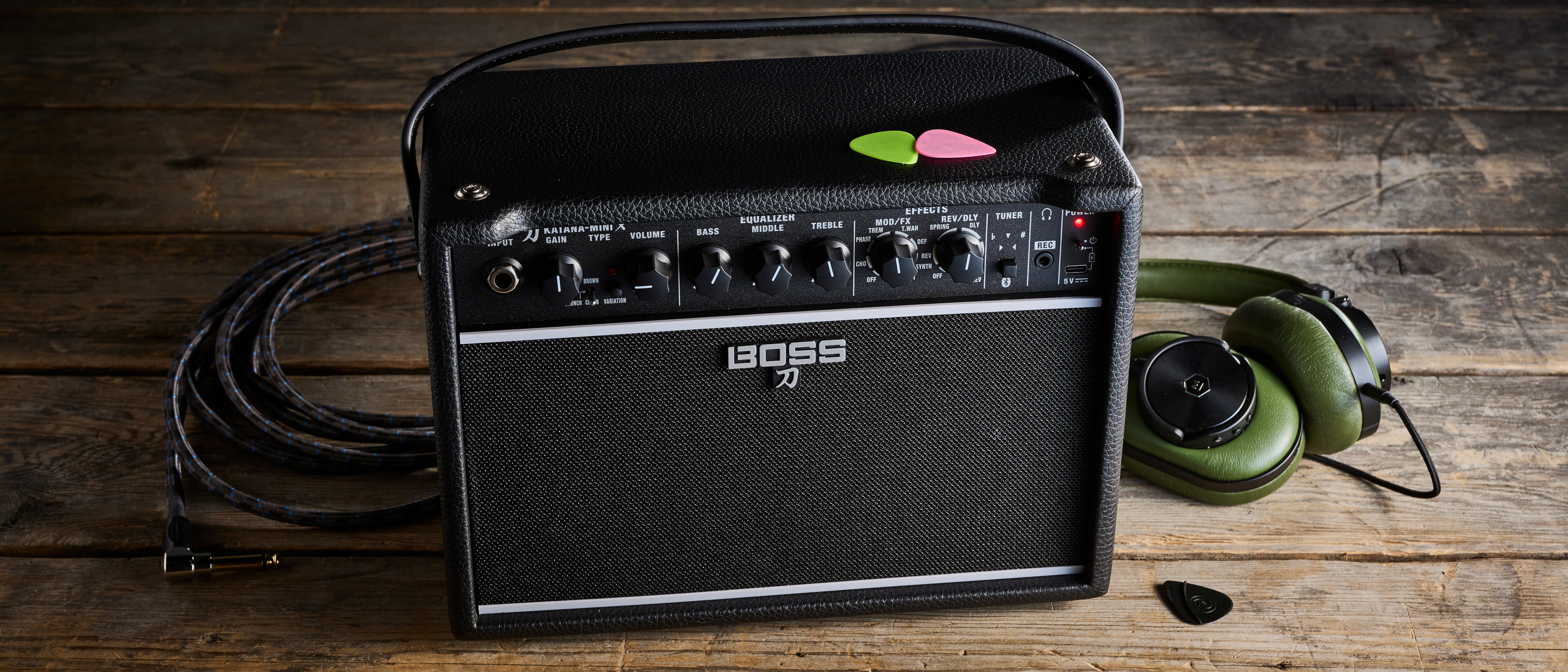Guitar World Verdict
If you want great tones and a solid range of effects in a small package without any reliance on apps and firmware updates, this is the mini amp to buy right now. You'll be surprised just how loud it can get too.
Pros
- +
Excellent range of expanded amp sounds and effects
- +
Easy-to-use front panel controls
- +
Good value for money
Cons
- -
Non adjustable delay
- -
No USB recording
- -
No mains power option
You can trust Guitar World
What is it
Calling Boss's Katana range of modeling amps a success is undercooking it somewhat: it's made the Japanese company become one of the biggest amp manufacturers in the world. But it also presented a problem.
The Katanas had the finely voiced amp models and curated Boss effects to present players with accessible guitar amps that could excel in practice rooms and on bar stages, but while it was on that mission the mini practice amp market blew up.
The standard was raised far above the tinny novelty mini stacks of old, with Yamaha and Positive Grid setting out impressive stalls with combos that looked like they belonged in your living room, or came with the bells and whistles of app connectivity. It eventually left Boss's own Katana-Mini looking a little undercooked by comparison, though certainly affordable.
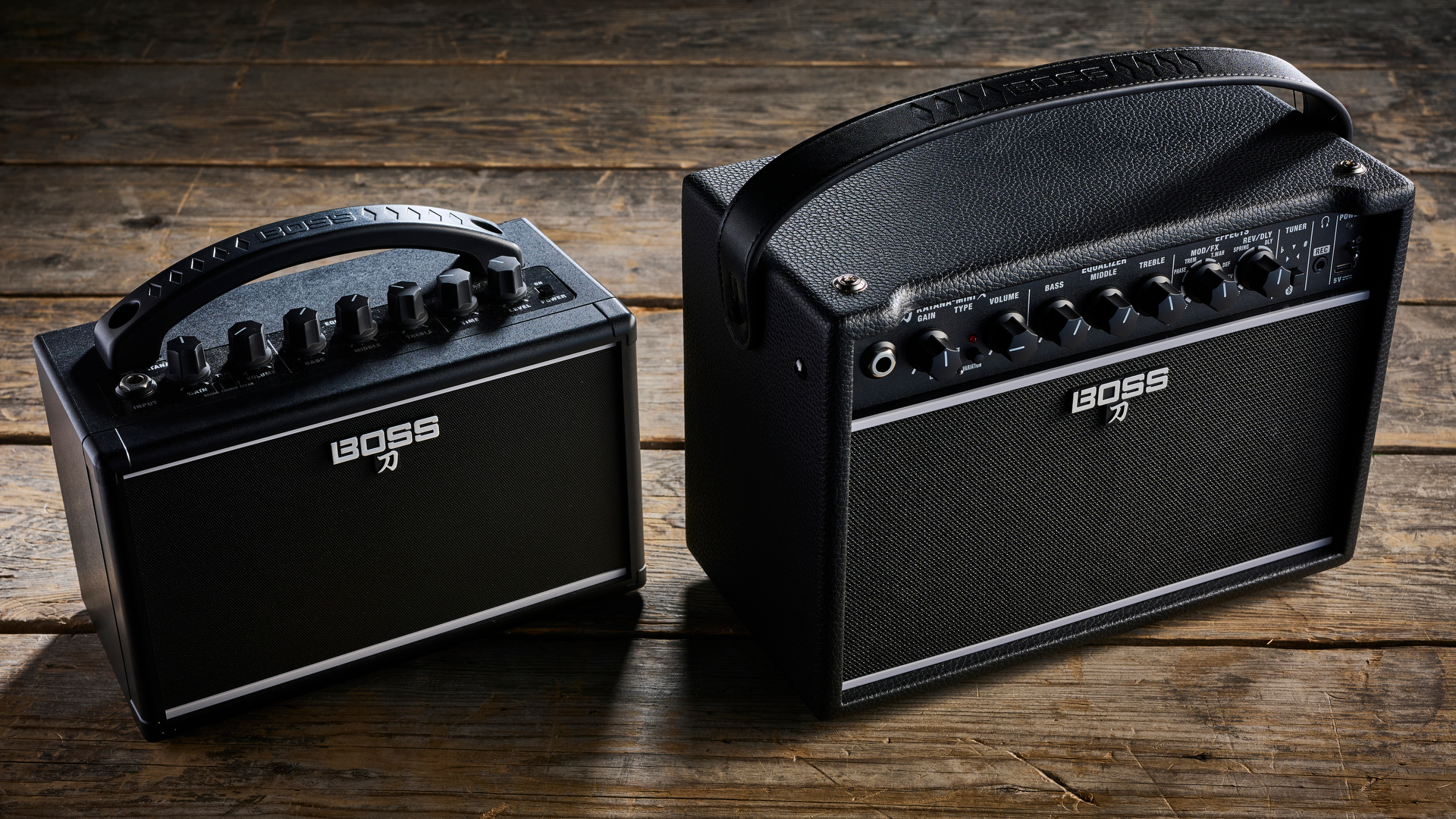
But what it did remind us was that Boss's focus on providing excellent foundation amp choices (in this case three) that people would want to play through is always compelling. And that's really been a core of the Katana's success, no matter what is built around it.
Whatever Boss did next would need to carry that value onwards while recognising the growth of this home-friendly end of the amp market. And the potential appeal is huge; because every player has space in their home for a practice amp, right?
The original Katana-Mini was a whole seven years ago, and following the evolution of the Katana line with its third generation, the Mini X now comes with a host of new features. It looks more like its bigger siblings too, but it's bigger than the original. Is it better? More specifically, is it good enough?
- Boss Katana Mini vs Katana Mini X: Which should you buy?
Specs
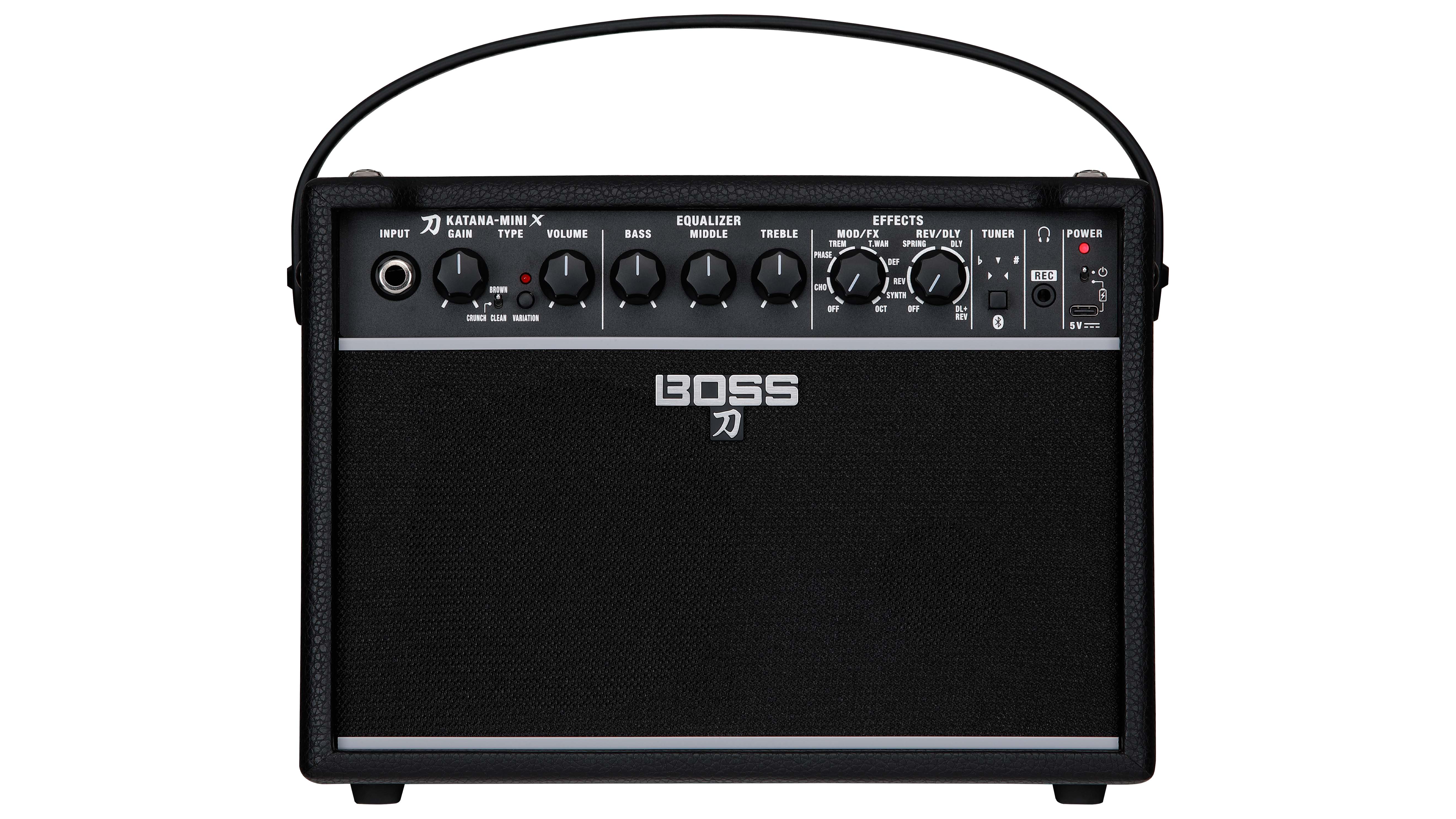
Launch price: $149.99/£146/€169
Type: 10-watt mini analog combo amp with digital effects
Origin: Thailand
Output: 10-Watts
Speaker: 5-inch
Channels: Three (Clean, Crunch and Brown), each with a switchable Variation
Controls: Bass, middle, Treble rotary knobs, power and amp type switches, Gain and Volume rotary knobs, Mod/FX and Reverb/Delay rotary knobs, Tuner/Bluetooth button
Connectivity: 1/4-inch input, 3.5mm headphone jack, 5v USB-C power input
Power: Rechargeable nickel-metal hydride battery (1500mA) with approx 10 hours life (3 hours charging with 5V 2A or higher USB power supply)
Weight: 6lbs/2.7kgs
Dimensions: WxHxD 287mm x 200mm x 145mm
Contact: Boss
Build quality
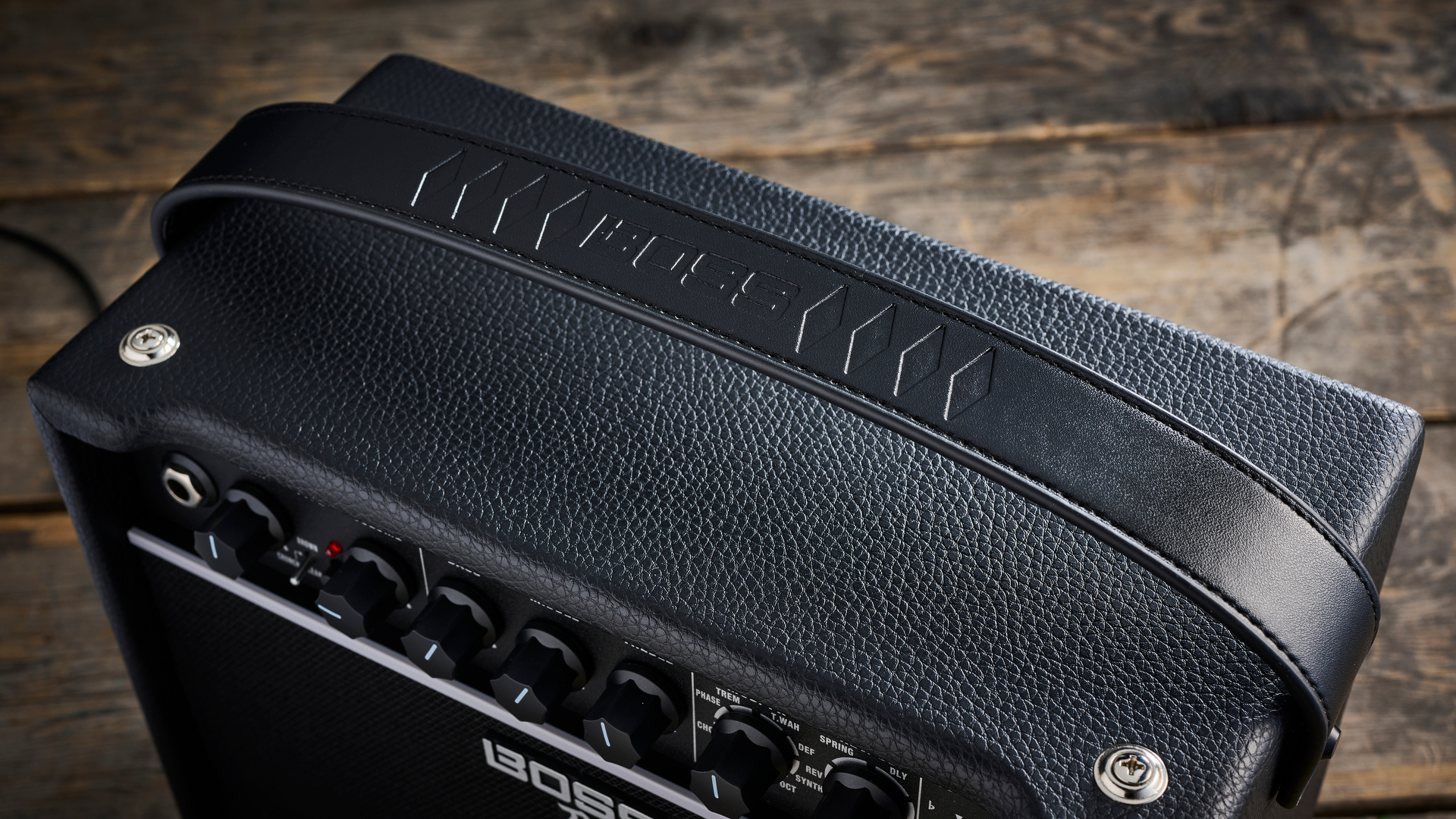
Build quality rating: ★★★★★
While the original 7-watt Katana-Mini didn't sound like a toy, its plastic casing and moulded handle did make it look and feel separate from the rest of the range. That's changed here; this is very much a little Katana amp, reflecting some of the DNA of the original Roland JC-120 in its contrasting lines and front panel. The previous Mini placed the controls on the top of the cabinet.
That cabinet is now wooden with a tolex covering and a removable synthetic handle. This feels sturdy and familiar to anyone who grew up with amp combos; it's a huge comparable upgrade but is unashamedly a combo amp in look and feel. It won't blend in with the pine or magnolia of your living room… until Boss makes it in white, anyway.
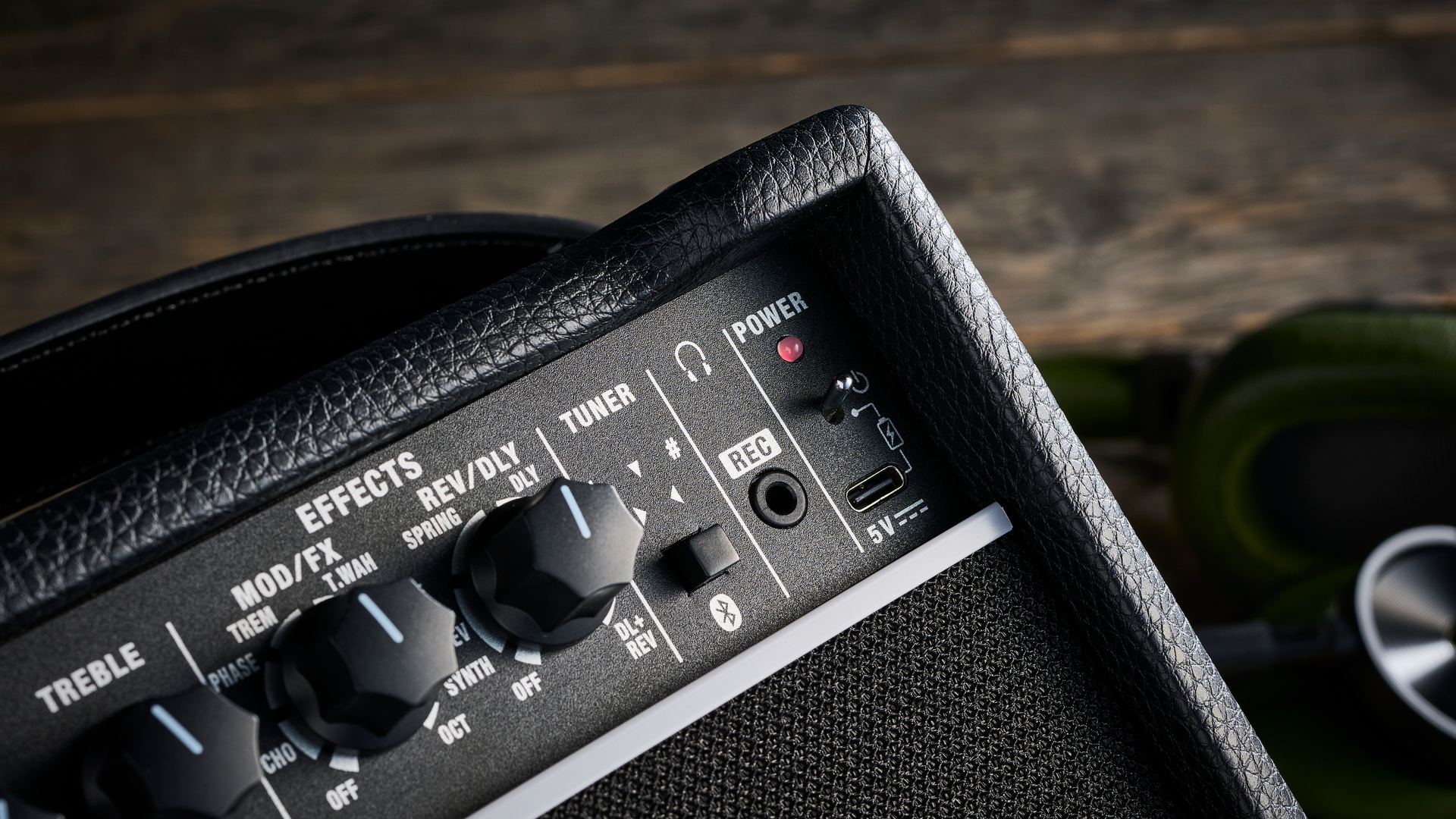
Everything is available on the front panel – there are no rear connections on the closed back to be found. The proposition is clear, and there's no smartphone app lurking to unlock any extra features for this amp either. The Katana-Mini X is self-contained hardware, and there's actually something refreshingly old-school about that right now to me.
The concession to modernity with the Katana-Mini X is to move to an internal rechargeable battery from the six AA batteries and optional Boss PSU (sold separately) of the previous Katana-Mini. That now seems like an archaic setup to be honest so I'm glad to see it gone. It's more convenient now, with USB-C charging, but I do have one complaint.
It's a point that could be aimed equally at the Positive Grid Spark Mini and Go; there's no pass-through charging, like a device such as a Steam Deck offers to gamers, for example. This can help prolong a battery's long-term health by allowing you to use the mains while and after the internal battery is charging.
So you are always depleting the nickel-metal hydride battery when you're using the Katana-Mini X – but I'm glad to report you can use this amp while it's charging for convenience.
And it's a wider point I'm making here, but I'd really like to see the industry consider the long-term lifespan of products that use internal rechargeable batteries that aren't necessarily user-replaceable. I think the option of powering devices from the mains or battery would be really useful and I'd personally be willing to pay a little extra for that piece of mind with a new desktop amp. Ok, mini rant over, let's move on!
Usability
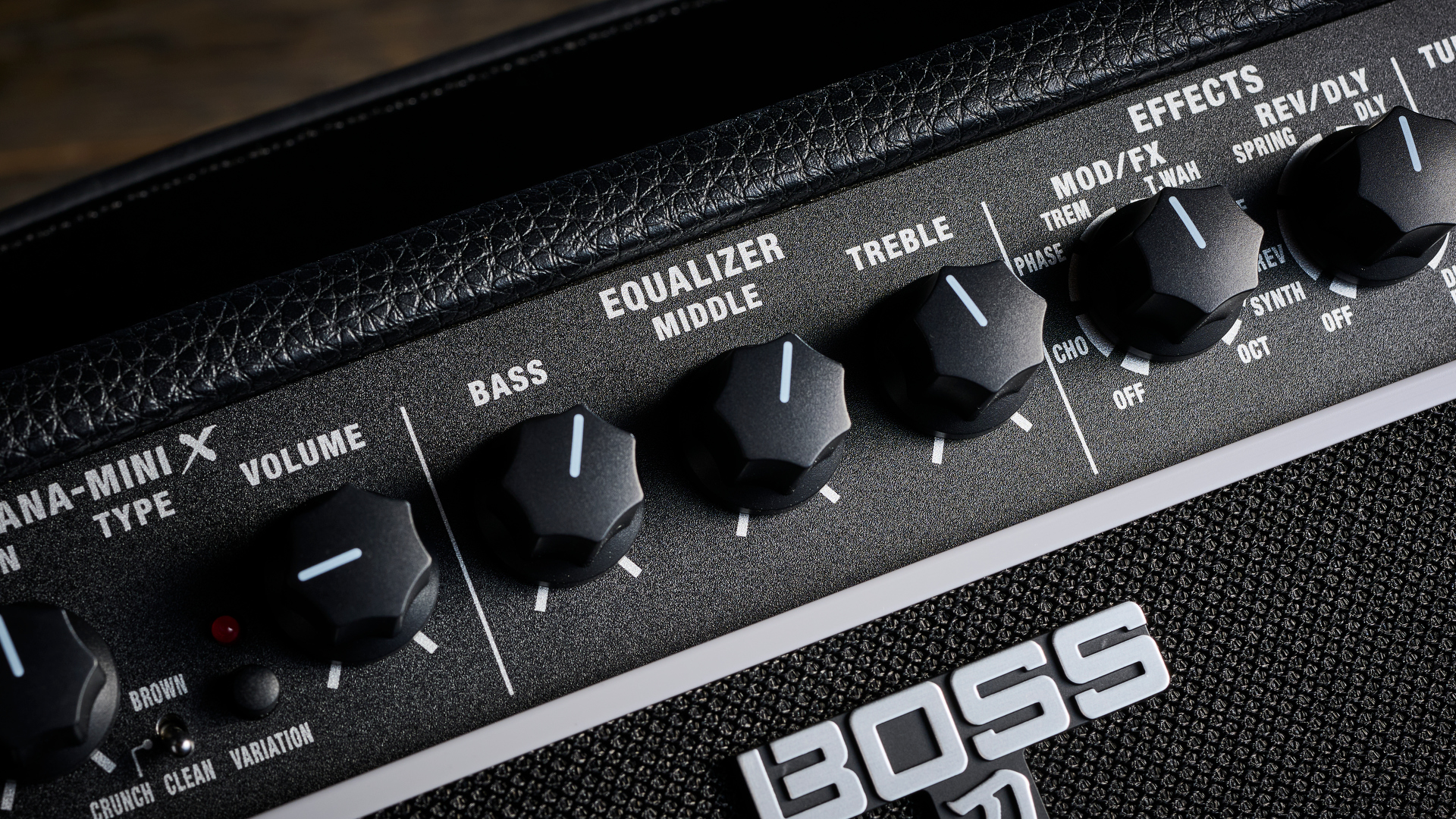
Usability rating: ★★★★1/2
Everything is clear and instantly accessible on this new model as you're sat with a guitar
Boss's other devices – including the bigger Katanas and the recent GX-10 multi-effects pedal my colleague Matt reviewed – require users to purchase a separate BT-Dual adaptor to use Bluetooth, but that's not the case here because it's built-in. It's just one of a suite of new features that a seven-year gap has afforded Boss to develop. And they combine to make it clear that this is an upgrade in every sense.
I mentioned the control panel being moved to the front, and this is much more than a visual change to make the Mini X look more like an actual Katana amp. Moving between the original Mini and this one when I'm sat with them at a table with my guitar, there's no competition when it comes to usability. Everything is clear and instantly accessible on this new model – it's ideal for a desktop.
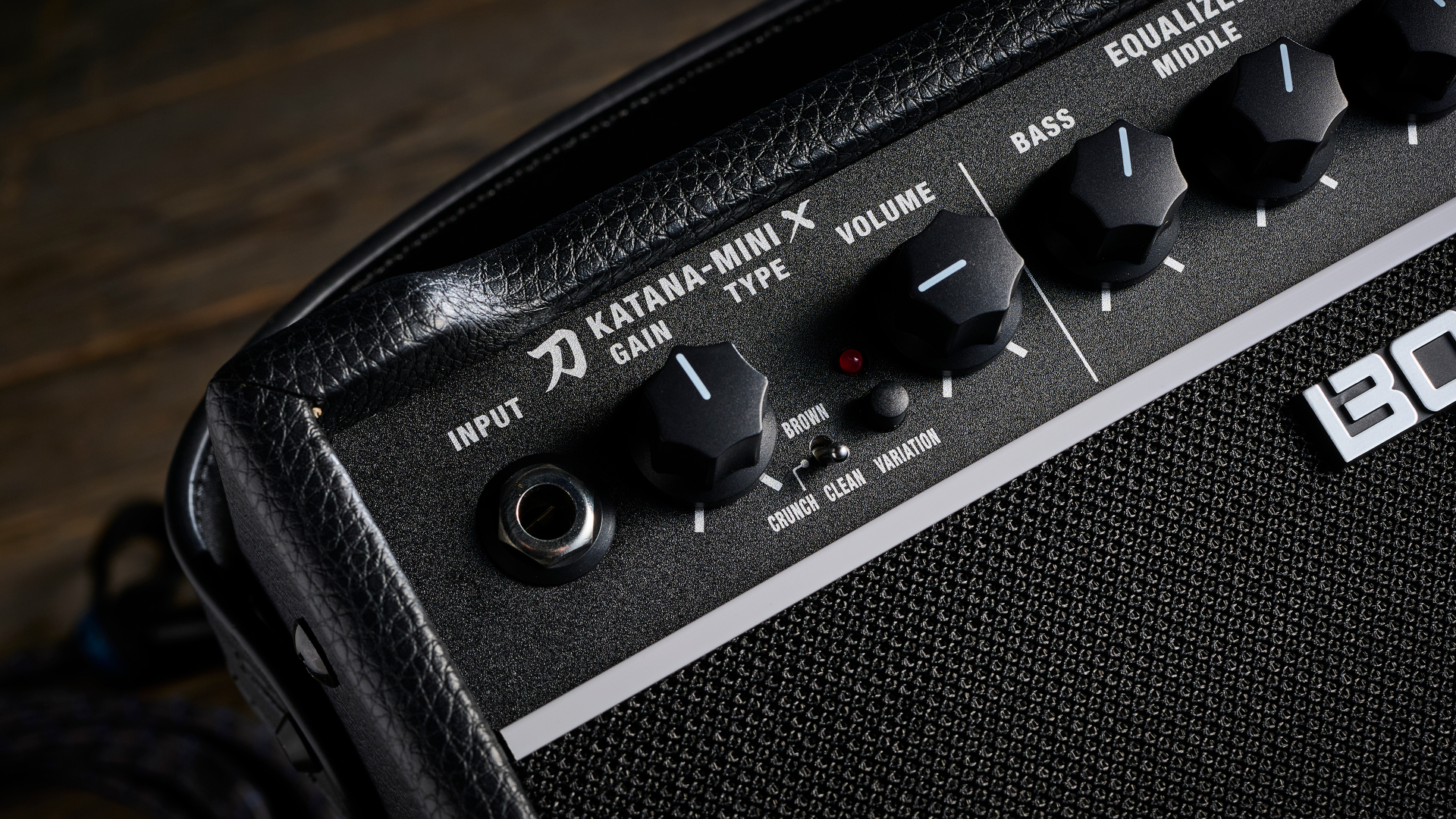
And there's more to access here too; the core Clean, Crunch and Brown channels are still present but each now has a Variation alternative voice like the bigger models. A new effects section (previously only delay was available) now offers modulations, auto wah, Synth and Octaver – and even a defretter (?!) on one rotary sweeping control, with delay and reverbs on another.
It becomes intuitive soon enough to dial in the speed, decay and intensity of these effects (mostly – delay is an exception as I'll explain soon) by ear with the placement of the rotary control. Again, there's a sense of reducing the obstacles to allow you to quickly get going to use this amp for its intended purpose.
I do have one complaint on the output side. The decision to go with 3.5mm for a headphone connection isn't surprising, but suggesting players use the same output for recording feels dated and impractical to me compared to the USB-C direct option from some of the competition.
Sounds
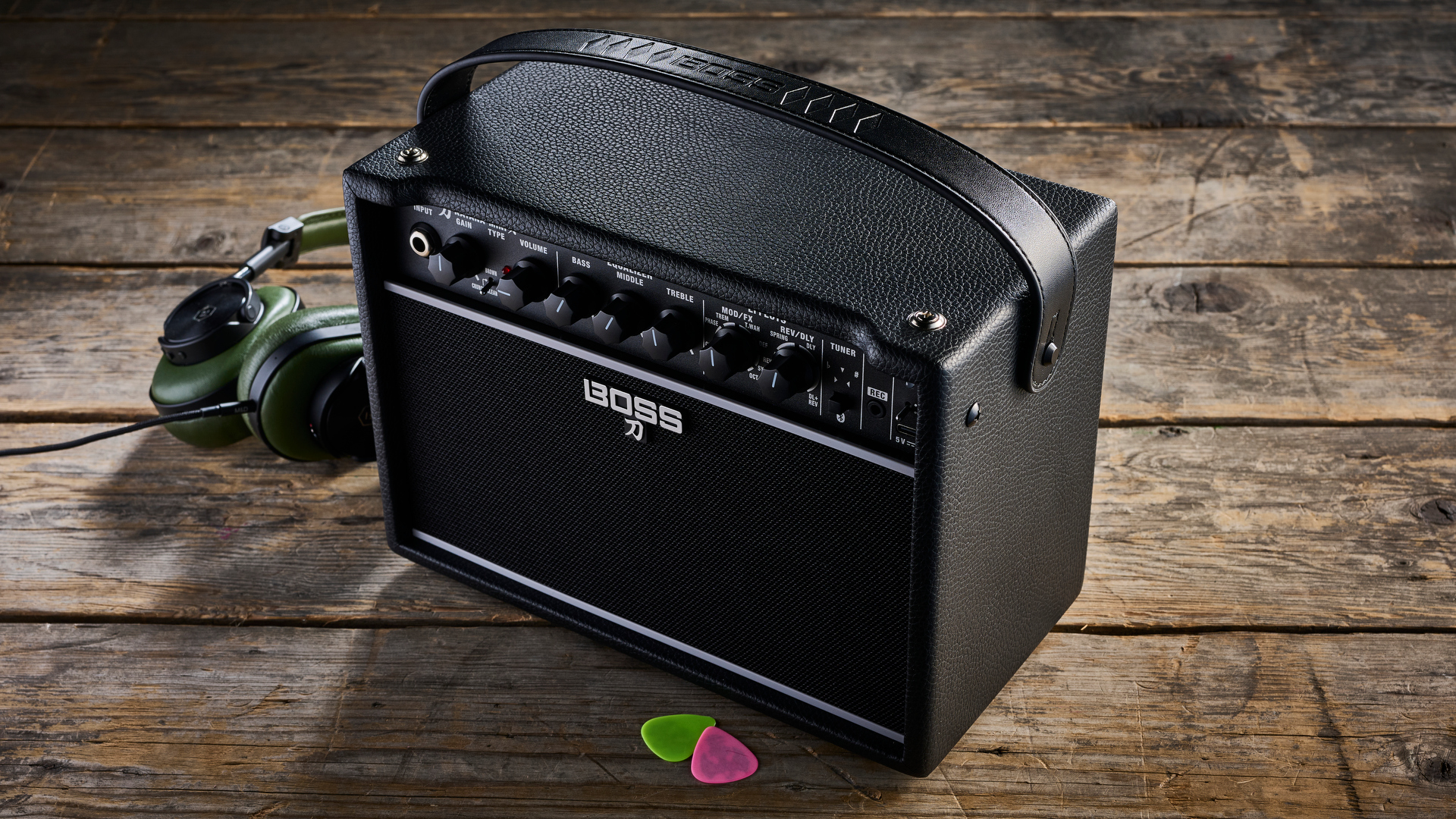
Sounds rating: ★★★★1/2
Katana users will know the sounds I'm going to talk about now. The Clean, Crunch and Brown are still cornerstones of the range as it heads confidently into its third generation. They appeared on the previous Katana-Mini but here they don't just benefit from the improved scope of the larger speaker and improved cab, but the Variation mode you'll find on the larger Katanas too – and I'll get to that soon.
In the more intimate experience of being sat with this amp at table height, I actually gained a new appreciation for the individual characters of my modest but well-loved collection of modded guitars
This isn't just a louder and more expansive-sounding Katana-Mini – at my kitchen table having the volume on two felt enough at close proximity, with my partner and kids wincing from the living room when I played with the Brown amp with volume at halfway! Maybe it's my playing…
I detect a richer harmonic experience too. Boss really did the work with the Katanas – choosing quality over quantity on the amp side, and there's a physicality to these tones that's really appealing as I try a selection of Telecaster, Strat, Player Mustang (with P-90-size Firebird pickups - I'm a guitar modder!) and humbucker-loaded SG Special guitars through it, I feel and hear more of their individuality as instruments coming through more than most experiences I've had with mini amps. I'll be honest, this is the kind of thing that gets me reaching for my credit card.
In the more intimate experience of being sat with this amp at table height, I actually gained a new appreciation for the characters of my modest but well-loved collection of modded guitars. The relative brightness compared to the more compressed character of the original Mini gives my neck pickups extra percussive bounce, bridges can sear but the articulation in chords even with the higher-gain SLO-esque Brown is impressive. Crunch is perfect for Hendrixian blues licks and choppy breakup rhythm.
Brown gets you into more traditional metal tones, but some will want a drive pedal in front to push into thick slabby saturation. Personally, I don't – the appeal here is that it's surprisingly articulate for a hi-gain amp type and is designed that way. If you're really keen on Dual Rectifier territory, there are more specific modelling alternatives of course, but the musicality and feel from this Katana's multi-stage analog gain circuit makes it incredibly addictive to play through just as it comes out of the box. However, there's an unexpected bonus to be found if you choose to bring in outside modelling pedals – like the recent Dual Rec fest of the Universal Audio Knuckles '92.
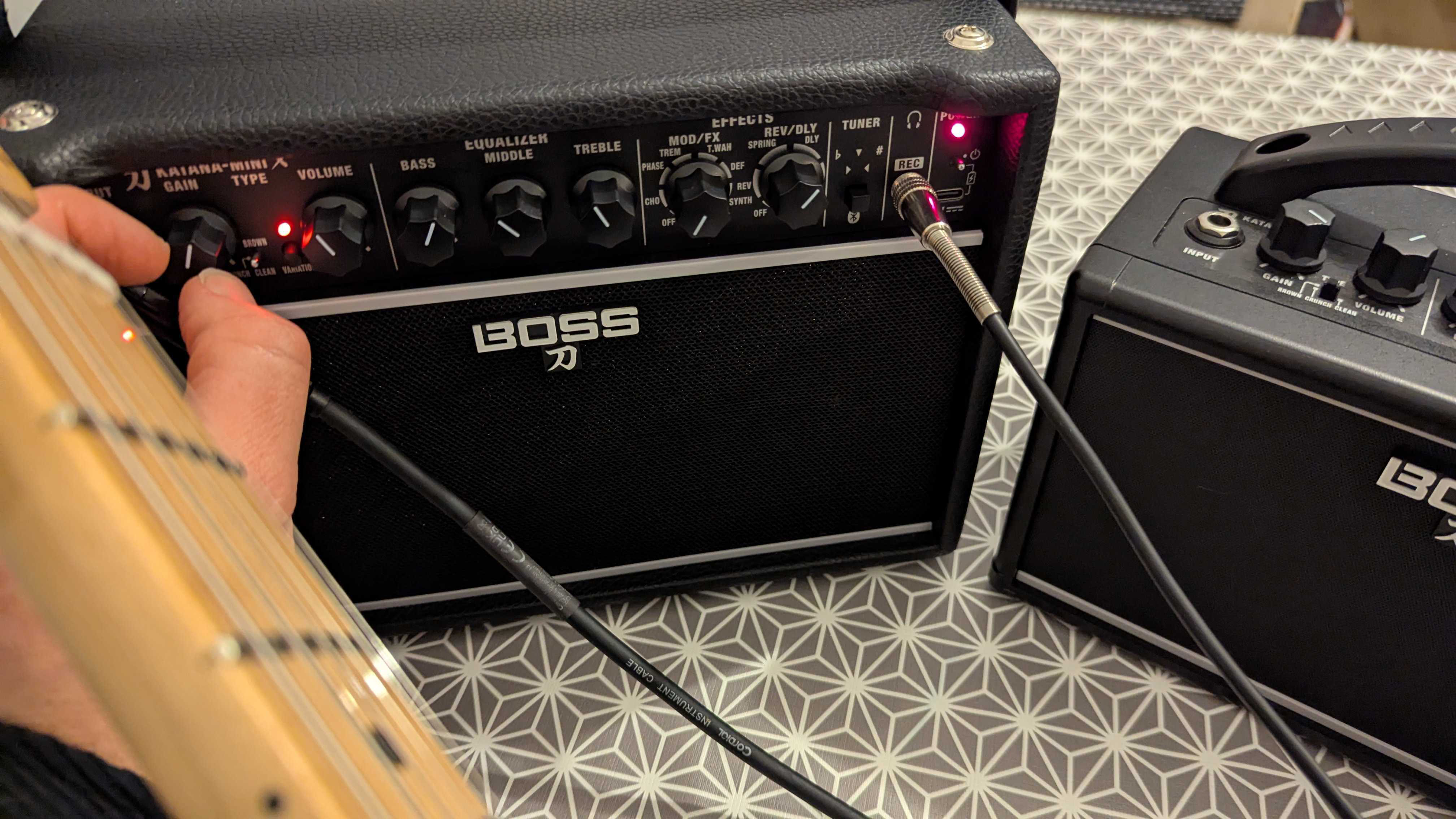
I mentioned the Variation button earlier, and each of the three amp types has one other voice to access with it. For the Clean it accesses an 'uncolored' flat mode for electric-acoustic guitars and bass (which accounts for that Defretter effect), but modelling pedals too, as I found with another Universal Audio pedal amp – the Dream '65 Fender Deluxe emulator. This option widens the potential of the Katana-Mini X further – and the output here could be enough for some solo acoustic and electric guitar street performers too.
For the Crunch, Variation adds high-end sustain that makes for a good solo voice. Brown's other mode tightens the low end for more of a US-leaning high-gain experience that is a lot of fun on the chugging side. It's all a great advert for the bigger Katanas, but also an excellent self-contained experience with everything a beginner guitarist would need – especially when you factor in the new effects section.
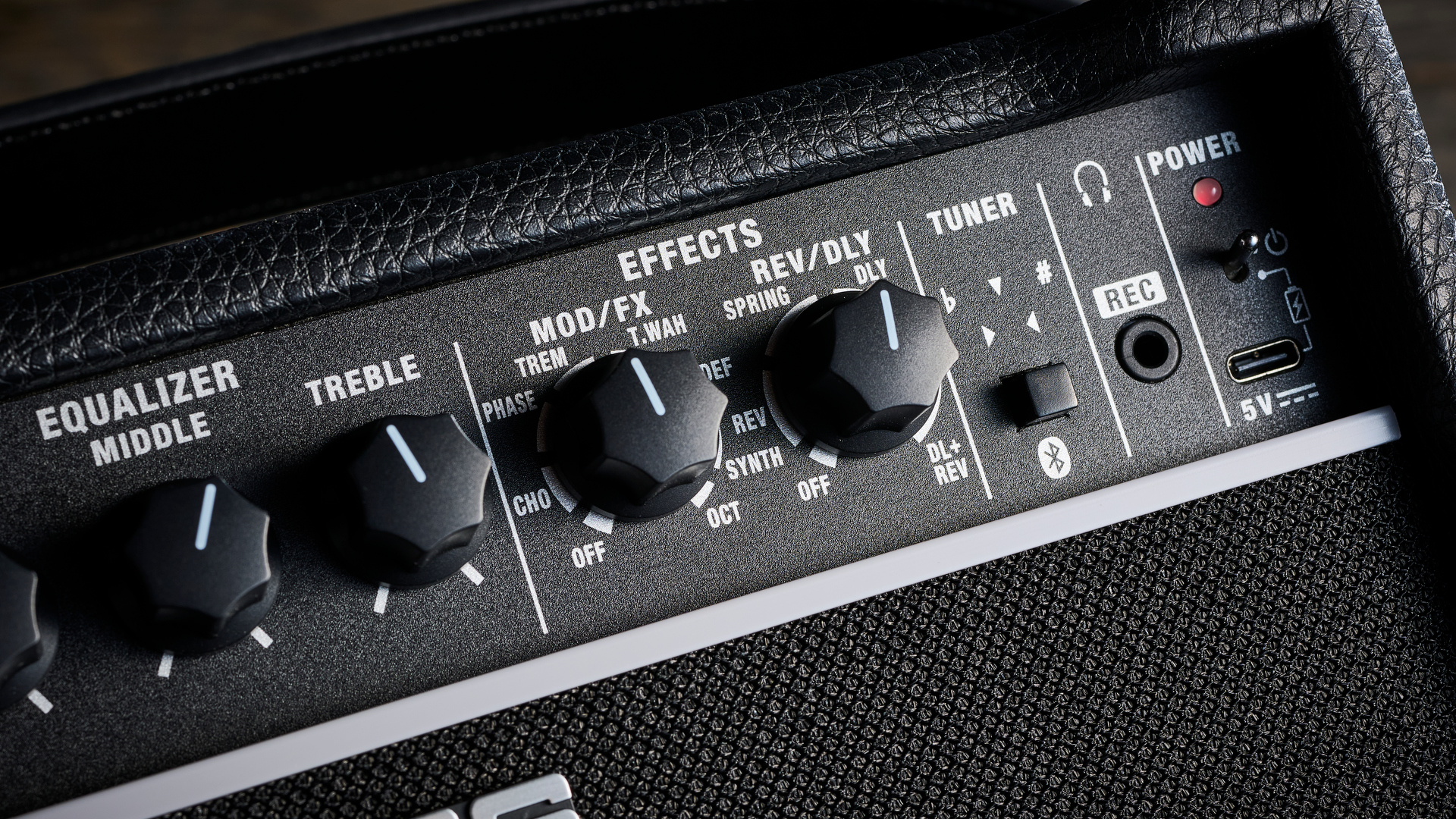
There's no building virtual signal chains in an app and saving presets here – you set the dials and you're away
There are two rotary controls for the effects section that are reminiscent of the kind found on the Roland Cube – one handles the tape-style delay, along with a hall reverb and spring reverb emulation that can also be combined with the Spring Reverb.
The other control cycles through different modulations (Chorus, Phaser, Tremolo) and the funky Touch-Wah (that responds to the dynamics of your playing), Defretter (which is a nice touch for bass players), the unexpected Synth that reacts to single notes (and doesn't work too well in Brown and isn't all that appealing/useful anyway unless you want to sound like a Velcro stylophone), plus an Octave effect that's also suited to single note playing. There's no building virtual signal chains in an app and saving presets here either – you set the dials and you're away.
The borderline novelty Synth aside, it's not all good news. While the original Katana-Mini only offered delay, it came with controls over Level and Time. The Level didn't really have a significant impact to my ears but the Time parameter was obviously useful – just as it is on every delay pedal out there. Neither is present here though– the delay time and repeats are fixed on the Katana-Mini X, which is an odd, regressive thing to encounter when Boss gets so much right here amongst its additions.
Verdict
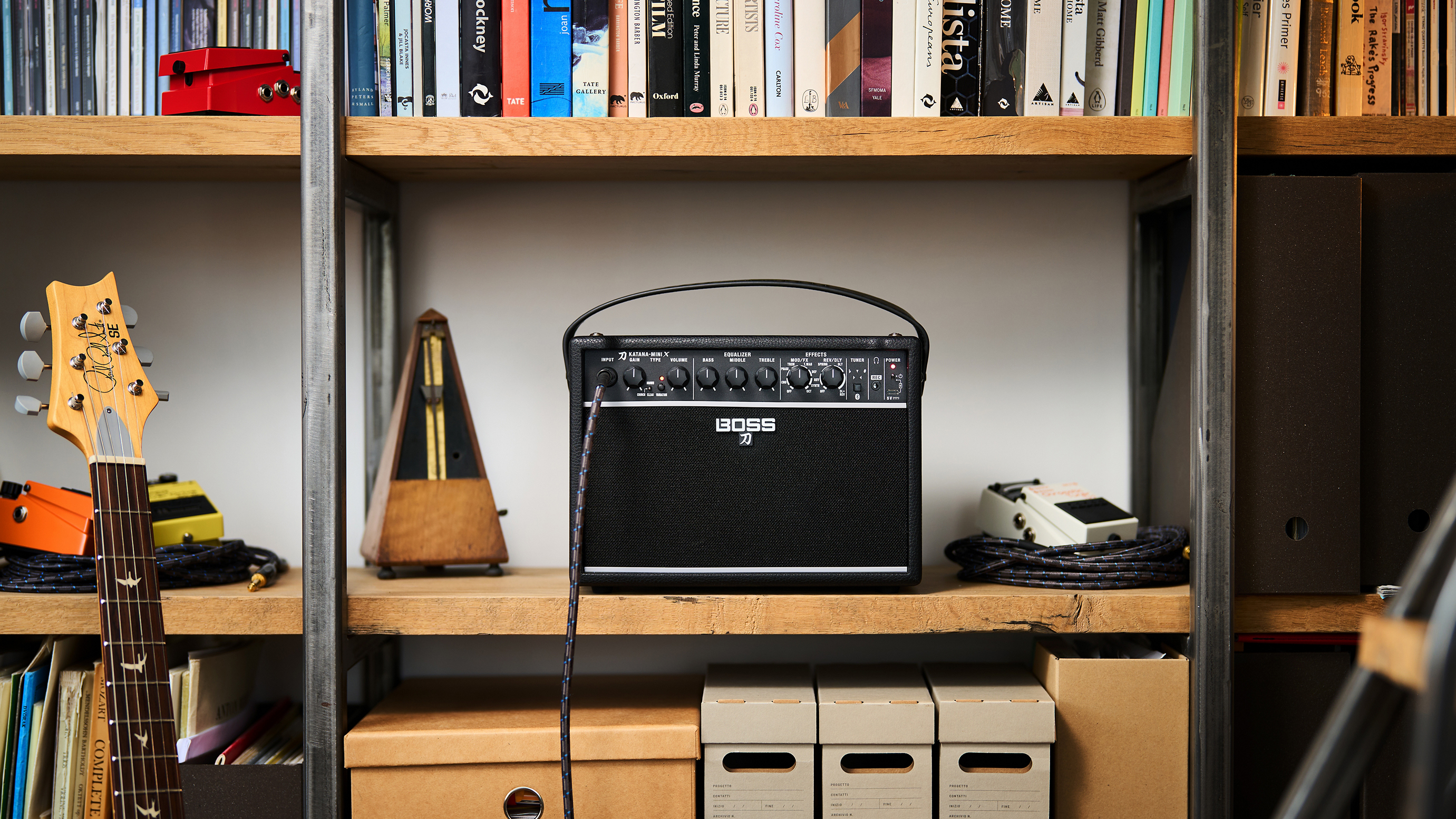
The Bluetooth side of things proved consistently reliable in my testing - it picks up my Android phone almost immediately after powering up. The only niggle is you can't control the streamed audio level on the amp itself for convenience. The same button used for pairing also activates a simple tuner.
But the real icing on the Katana cake for me here is the headphone experience – it's excellent. I'm not always inclined to play with headphones out of choice, though I doubt I'm alone here in feeling that I really have to in the house when my family are around. This amp is persuasive on that side while the previous iteration sounds rather compressed by comparison with my Yamaha HPH-MT7 studio monitor headphones. The Katana-Mini X can go very loud through cans too.
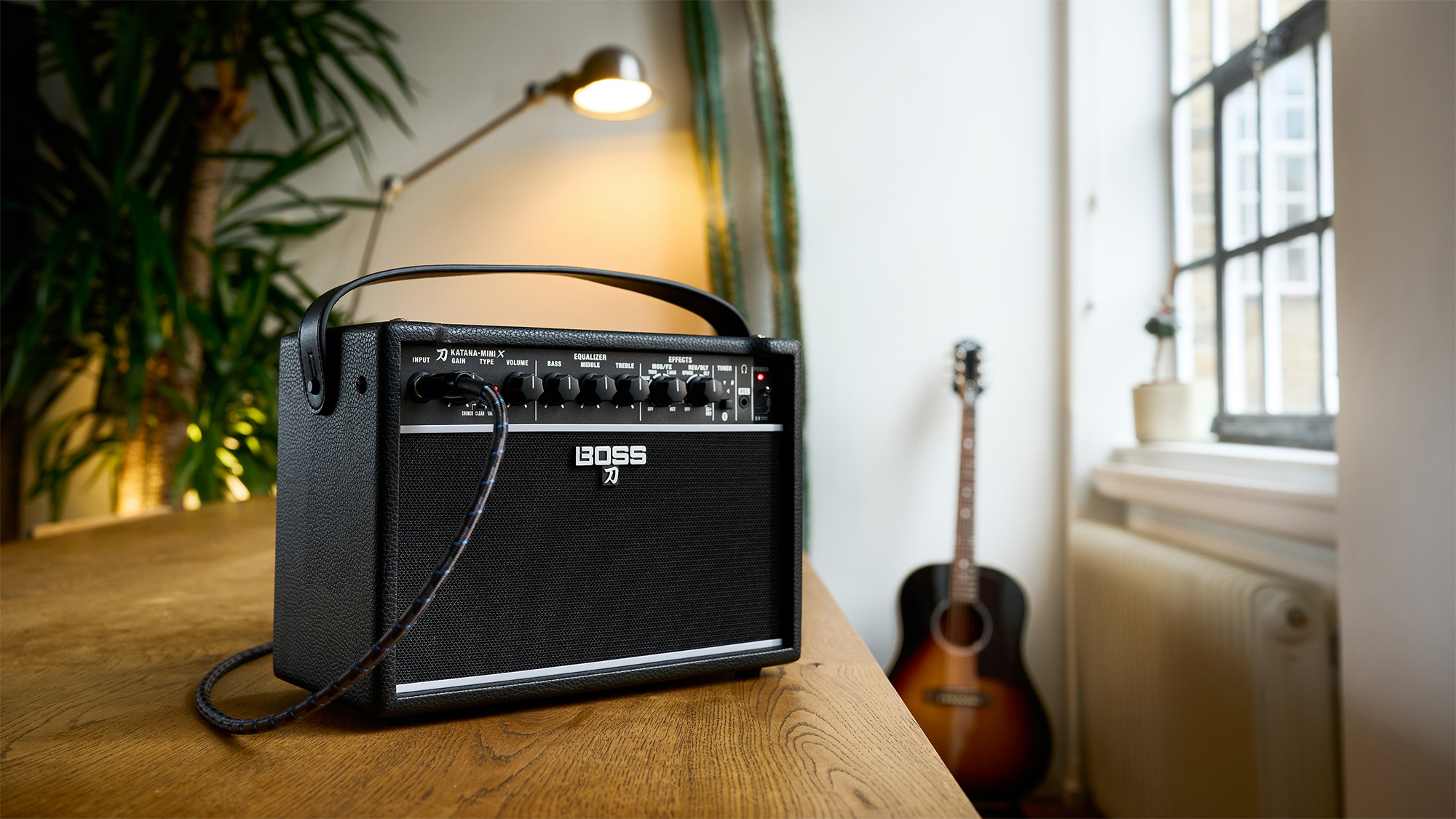
I think it's definitely worth the asking price
This all adds up to a clear improvement on the Mini Katana, but also a self-contained prospect for newer players that's convenient and offers an excellent gateway to effects and amp tones. But everyone should enjoy this amp. Away from the sheer breadth of options offered by app-paired modelling amps, these are the best amp sounds I've heard from a mini combo to date. Boss really has got its basics right with the Katana range, and the three amp types and variations here with a highly responsive three-band EQ count for a lot before factoring in the effects.
That also means the shortcomings I've pointed out aren't dealbreakers to me – though the limited delay effect and lack of USB recording are eyebrow-raisers and no mistake. These points are worth considering carefully depending on your needs and expectations. However, the Mini X is so usable and inspiring out of the box elsewhere that it's very clear the Katana brand is going to be adopted by more players through this amp. And it deserves to – I think it's definitely worth the asking price.
Guitar World verdict: If you want great tones and a solid range of effects in a small package without any reliance on apps and firmware updates, this is the mini amp to buy right now. You'll be surprised just how loud it can get too.
| Test | Results | Score |
|---|---|---|
| Build quality | Solid, dependable and designed for ease of use | ★★★★★ |
| Usability | Everything is at your fingertips here – with a couple of small downsides | ★★★★1/2 |
| Sounds | The Boss Katana recipe is a compelling one indeed | ★★★★1/2 |
| Overall | One of the very best desktop amps right now, especially if apps aren't your thing | ★★★★1/2 |
Also try
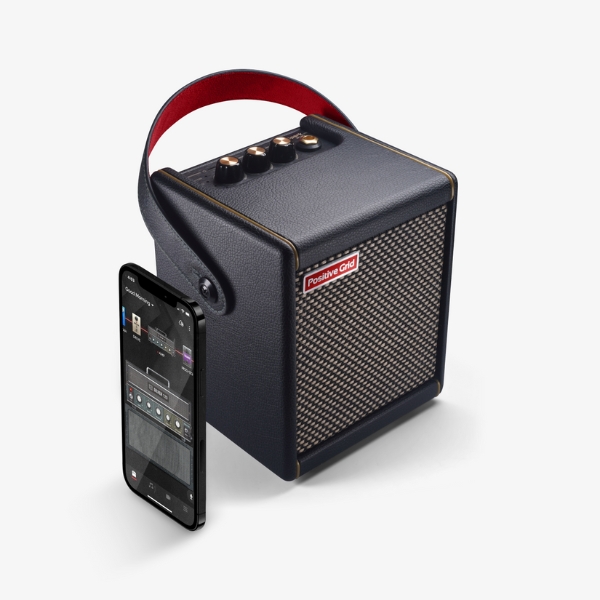
$1189/£179
The Katana-Mini's closest rechargeable 10-watt rival in terms of value is a different proposition in form and functionality. There are no onboard EQ controls or effects selection on the hardware; you choose your amps and signal chain the Spark App and save as one of four presets. The selection of models is impressive and the app has jamming and learning features too.
Read our review
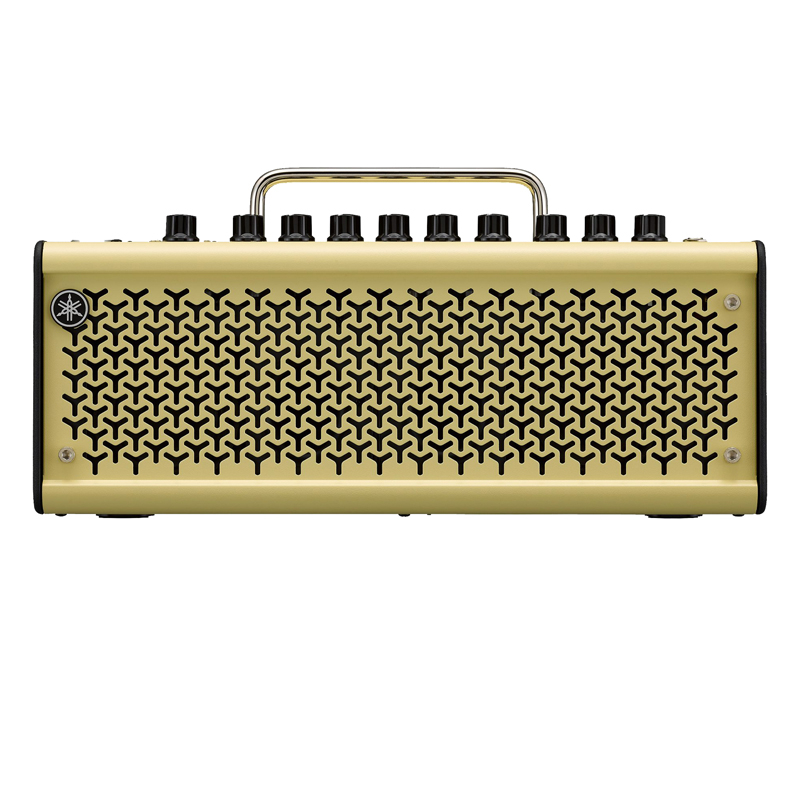
$439/£348
Yamaha was early in realising the demand for small practice amps that could also look stylish in your home. This rechargeable 20-watt combo is part of the second generation range with 15 guitar amps, 3 bass amps, 3 mic models for acoustic-electric guitars, and a flat response mode. There are eight effects too, and it's looking pricey now next to the competition but offers undeniable quality.
Read our review
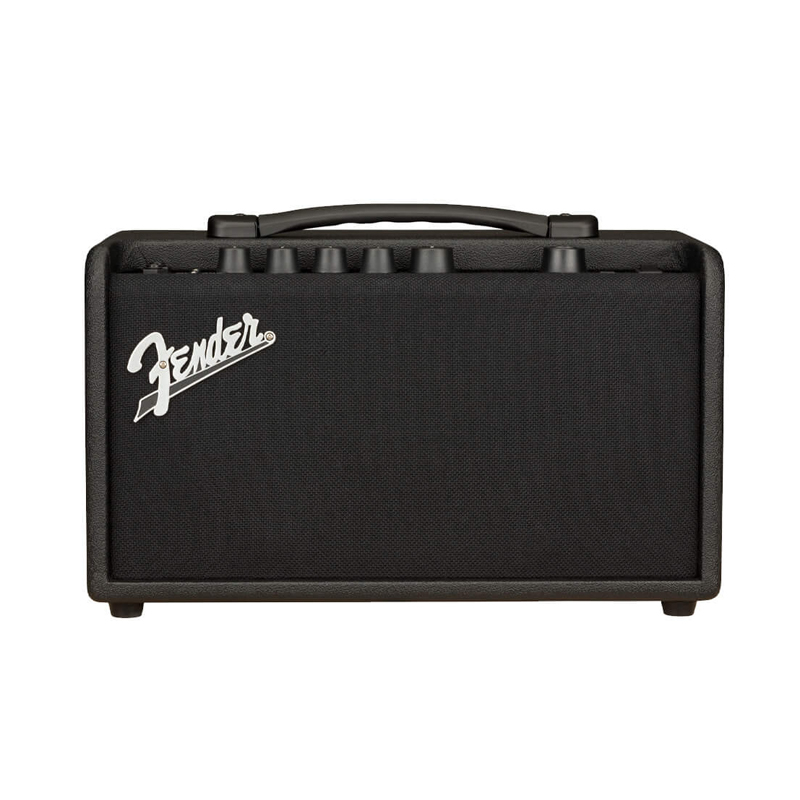
$199/£219
No Bluetooth or battery power here and some controls need Fender's app, but you do get a 1.8" colour screen, 40-watts output and the strength of Fender's modelling of its own classic amps alongside a strong selection of effects.
Read our review
Hands-on videos
The Guitar Geek
Ola Englund

Rob has 20 years of experience writing, reviewing and editing for guitar magazines and websites, including Guitarist and Total Guitar. He's now the Reviews Editor for GuitarWorld.com and MusicRadar guitars, heading up our in-house reviews team to give you in-depth and honest tests of the latest guitar gear. He eats and dreams reviews.
“I was playing in the living room, he walked past and shot me this look of ‘Do that again.’ So I bent the string up and he gave me this nod of approval”: Jack Moore on lessons learned from his father, Gary
“I heard the Money solo and thought, ‘This is amazing!’ So I sent David a telegram saying, ‘Remember me? I'm in a band now called Roxy Music’”: Phil Manzanera on his friendship with David Gilmour, and the key to the Pink Floyd man's unmistakable tone
“It’s really quite genius, but also hard to learn – it sounds insane, but sometimes the easiest songs still get me nervous”: Kiki Wong reveals the Smashing Pumpkins song she had the most trouble with
